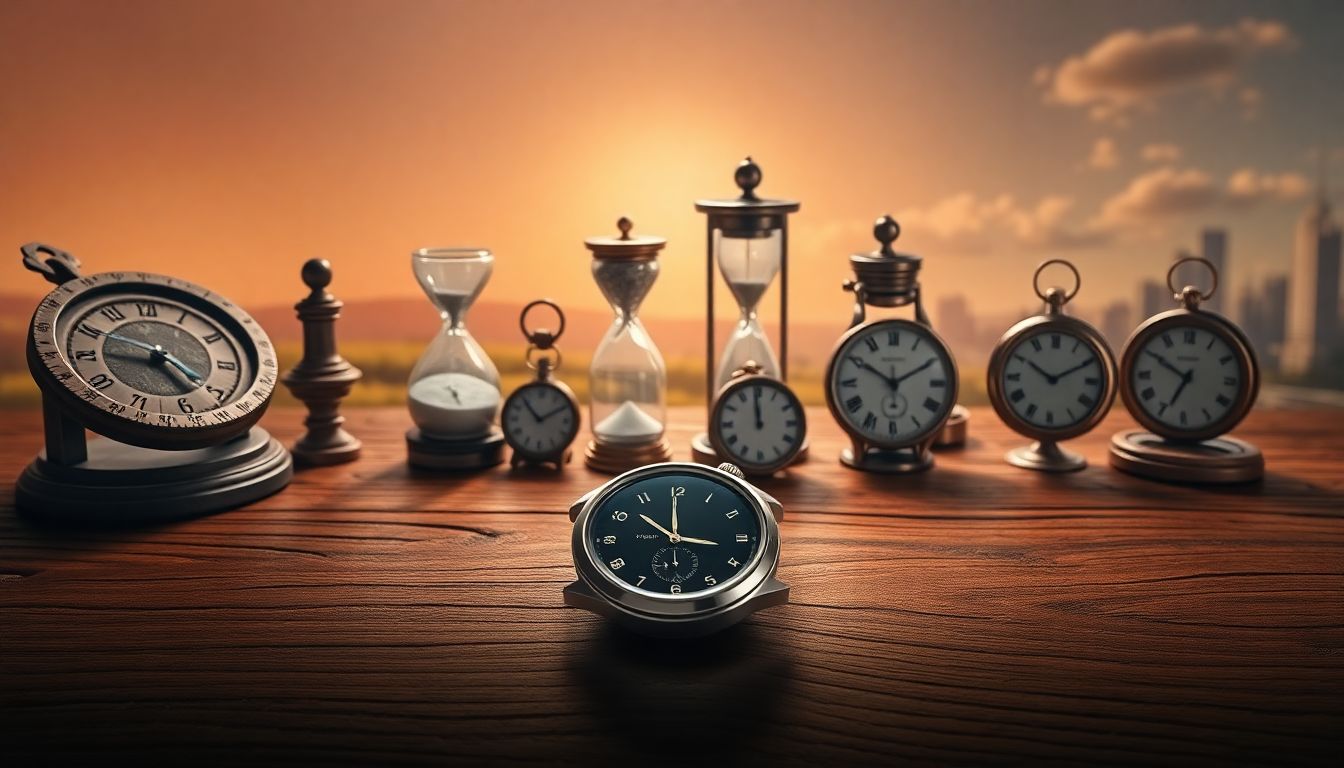
The way we keep track of time today is deeply woven into our daily lives, yet it stands in stark contrast to the methods used by ancient civilizations. From sunlit hours to precise digital seconds, timekeeping has shaped human activities, cultures, and advancements. This article tracks the fascinating journey of timekeeping technology, highlighting significant innovations and their effects on society.
Ancient Timekeeping: Harnessing the Power of Nature
Sundials
Sundials represent some of the earliest forms of timekeeping. They work by casting a shadow from a gnomon (the part that sticks up) onto a marked surface, indicating the time based on the sun’s position. Different cultures, including the Egyptians, Greeks, and Mayans, utilized sundials, although they had their limitations. They could only function in daylight and were susceptible to the seasons’ changes, which made them unreliable during certain times of the year.
Water Clocks (Clepsydras)
Water clocks, known as clepsydras, were innovative devices that measured time through the flow of water. Ancient Egyptians and Greeks advanced the design, creating various forms that allowed for more accurate tracking than sundials. For instance, in ancient China, water clocks played a significant role in scheduling rituals and farming activities. They marked significant advancements in timekeeping by allowing measurement during cloudy days and nights.
Early Mechanical Clocks
Mechanical clocks represented a monumental shift from natural phenomena to engineered devices. These clocks started appearing in the late Middle Ages, primarily in monasteries, where they were used to call monks to prayer. While these early clocks had limitations in accuracy, they paved the way for future advancements.
The Mechanical Revolution: Gears, Springs, and Pendulums
The Escapement Mechanism
One of the most important inventions in the history of clocks is the escapement mechanism. It regulates the release of energy from the gear train, resulting in a more consistent timekeeping rate. This breakthrough significantly enhanced clock accuracy and laid the groundwork for precision timekeeping.
The Pendulum’s Influence
Galileo’s work on pendulums revolutionized clockmaking. He discovered that a pendulum’s swing could be used to measure time more accurately. The famous pendulum clock, created by Christiaan Huygens in 1656, showcased remarkable precision. It laid the foundation for timekeeping mechanisms used for centuries.
Mass Production and the Rise of Mechanical Clocks
The Industrial Revolution brought mass production techniques that greatly increased the availability and affordability of clocks. By the late 19th century, it is estimated that millions of clocks were produced annually, making timekeeping accessible to the general public. This democratization of timekeeping changed society as people began to adhere to more structured schedules.
The Quartz Revolution: Accuracy and Affordability
The Invention of the Quartz Clock
The introduction of quartz clocks in the 20th century transformed timekeeping yet again. Quartz crystals vibrate at a consistent frequency when subjected to an electric current, allowing for highly accurate time measurement. These clocks were not only precise but also affordable.
The Rise of Quartz Watches
By the 1970s, quartz watches began to dominate the market. In fact, by 1980, quartz watches made up over 90% of the watch industry. This shift from mechanical to quartz technology changed how people viewed timekeeping, emphasizing accuracy and convenience.
Quartz Clocks in Everyday Life
Quartz clocks became ubiquitous in homes, schools, and workplaces. From wall clocks to alarm clocks, their presence became essential, illustrating how advancements in technology can permeate into everyday life.
The Digital Age: Electronic and Atomic Clocks
Digital Clocks and the Microchip
With the advent of the microchip in the late 20th century, digital clocks became commonplace. They offered ease of reading and further enhanced timekeeping accuracy, making them a staple in homes and businesses alike.
Atomic Clocks and Their Precision
Atomic clocks represent the pinnacle of timekeeping precision. Using vibrations of atoms, they can measure time to an astonishing accuracy of one second in millions of years. They are vital in scientific applications and have transformed our understanding of time.
GPS and Time Synchronization
Atomic clocks play a crucial role in Global Positioning System (GPS) technology. The system relies on precise timing from multiple atomic clocks in satellites, which enables users to navigate effectively. This global synchronization has changed how we travel and communicate.
The Smartwatch Era: Timekeeping and Beyond
Smartwatches
Today’s smartwatches go beyond just telling time. They serve as fitness trackers, communication tools, and personal assistants. Users can monitor health metrics, receive notifications, and access apps, combining traditional timekeeping with modern technology.
The Future of Timekeeping
Experts predict that advancements in wearable technology will continue to shape the future of timekeeping. As technology evolves, we may see enhanced features such as better health integration and improved connectivity. Some even believe that future devices may predict individual daily schedules based on AI.
Actionable Tips
Choosing a smartwatch depends on personal needs. Factors to consider include:
- Health tracking features
- Compatibility with smartphones
- Battery life
- Style and comfort
Conclusion
The journey of timekeeping is filled with extraordinary milestones, from ancient sundials to modern smartwatches. This evolution not only reflects technological advancements but also illustrates how essential timekeeping has become in society. Continuous innovation in this field suggests that our relationship with time will keep evolving, maintaining a significant impact on human experience.



